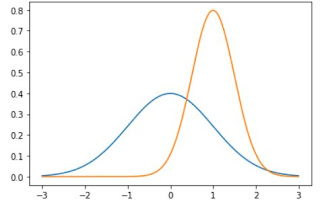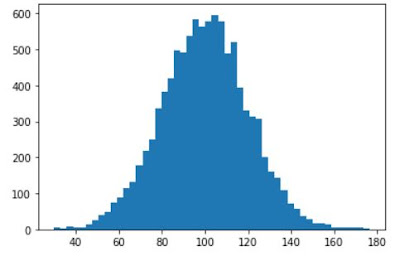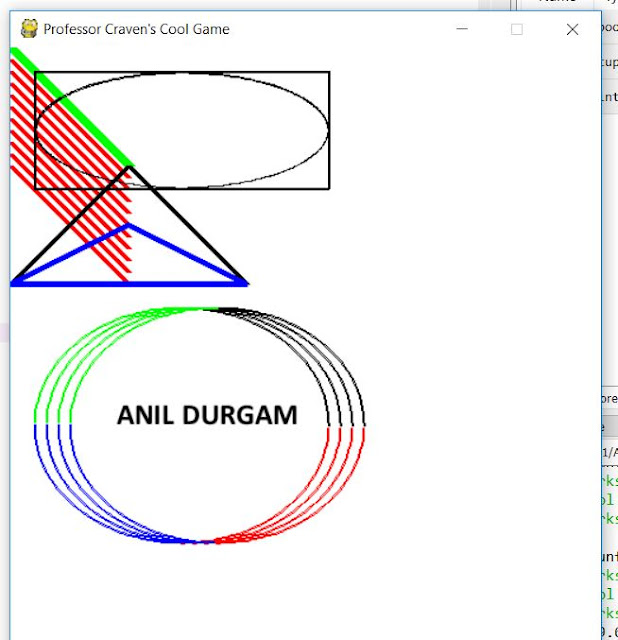from tkinter import *
import pymysql
def View_table():
mycursor.execute("SELECT * FROM MM32")
row = mycursor.fetchone()
while row is not None:
print(row)
row = mycursor.fetchone()
conn=pymysql.connect(host="localhost",user="root",password="",db="my_python")
mycursor=conn.cursor()
#main code start here
class Application:
def __init__(self, master):
self.master = master
# creating the frames in the master
self.left = Frame(master, width=1024, height=900, bg='steelblue')
self.left.pack(side=LEFT)
#self.right = Frame(master, width=400, height=720, bg='steelblue')
#self.right.pack(side=RIGHT)
# labels for the window
self.heading = Label(self.left, text="ONYX COMPONENTS & SYSTEMS", font=('arial 35 bold'), fg='black', bg='steelblue')
self.heading.place(x=100, y=0)
# patients name
#PartNo, ARMVer, MaxSpeed,Flash,RAM,GPIO,AdvTimer,GPTM,WDG,RTC,UART,I2C,SPI,ADC,EEPROM,PACK,DAC,USB,CAN,SDIO,COMP,AES,TRNG
self.PartNo = Label(self.left, text="PartNo", font=('arial 12 bold'), fg='black', bg='steelblue')
self.PartNo.place(x=0, y=80)
# ARMVer
self.ARMVer = Label(self.left, text="ARMVer", font=('arial 12 bold'), fg='black', bg='steelblue')
self.ARMVer.place(x=520, y=80)
# MaxSpeed
self.MaxSpeed = Label(self.left, text="MaxSpeed", font=('arial 12 bold'), fg='black', bg='steelblue')
self.MaxSpeed.place(x=0, y=120)
# Flash
self.Flash = Label(self.left, text="Flash", font=('arial 12 bold'), fg='black', bg='steelblue')
self.Flash.place(x=520, y=120)
# RAM
self.RAM = Label(self.left, text="RAM", font=('arial 12 bold'), fg='black', bg='steelblue')
self.RAM.place(x=0, y=160)
# AdvTimer
self.GPIO = Label(self.left, text="GPIO", font=('arial 12 bold'), fg='black',bg='steelblue')
self.GPIO.place(x=520, y=160)
# AdvTimer
self.AdvTimer = Label(self.left, text="AdvTimer", font=('arial 12 bold'), fg='black',bg='steelblue')
self.AdvTimer.place(x=0, y=200)
#GPTM
self.GPTM = Label(self.left, text="GPTM", font=('arial 12 bold'), fg='black',bg='steelblue')
self.GPTM.place(x=520, y=200)
#WDG,RTC,UART,I2C,SPI,ADC,EEPROM,PACK,DAC,USB,CAN,SDIO,COMP,AES,TRNG
self.WDG = Label(self.left, text="WDG", font=('arial 12 bold'), fg='black',bg='steelblue')
self.WDG.place(x=0, y=240)
#RTC
self.RTC = Label(self.left, text="RTC", font=('arial 12 bold'), fg='black',bg='steelblue')
self.RTC.place(x=520, y=240)
#UART,I2C,SPI,ADC,EEPROM,PACK,DAC,USB,CAN,SDIO,COMP,AES,TRNG
self.UART = Label(self.left, text="UART", font=('arial 12 bold'), fg='black',bg='steelblue')
self.UART.place(x=0, y=280)
#,I2C
self.I2C = Label(self.left, text="I2C", font=('arial 12 bold'), fg='black',bg='steelblue')
self.I2C.place(x=520, y=280)
#SPI
self.SPI = Label(self.left, text="SPI", font=('arial 12 bold'), fg='black',bg='steelblue')
self.SPI.place(x=0, y=320)
#PACK,DAC,USB,CAN,SDIO,COMP,AES,TRNG
self.USB = Label(self.left, text="USB", font=('arial 12 bold'), fg='black',bg='steelblue')
self.USB.place(x=520, y=320)
#ADC
self.ADC = Label(self.left, text="ADC", font=('arial 12 bold'), fg='black',bg='steelblue')
self.ADC.place(x=0, y=360)
#EEPROM,PACK,DAC,USB,CAN,SDIO,COMP,AES,TRNG
self.EEPROM = Label(self.left, text="EEPROM", font=('arial 12 bold'), fg='black',bg='steelblue')
self.EEPROM.place(x=520, y=360)
#DAC
self.DAC = Label(self.left, text="DAC", font=('arial 12 bold'), fg='black',bg='steelblue')
self.DAC.place(x=0, y=400)
#CAN,SDIO,COMP,AES,TRNG
self.CAN = Label(self.left, text="CAN", font=('arial 12 bold'), fg='black',bg='steelblue')
self.CAN.place(x=520, y=400)
#SDIO,COMP,AES,TRNG
self.SDIO = Label(self.left, text="SDIO", font=('arial 12 bold'), fg='black',bg='steelblue')
self.SDIO.place(x=0, y=440)
#SDIO,COMP,AES,TRNG
self.COMP = Label(self.left, text="COMP", font=('arial 12 bold'), fg='black',bg='steelblue')
self.COMP.place(x=0, y=480)
#SDIO,COMP,AES,TRNG
self.AES = Label(self.left, text="AES", font=('arial 12 bold'), fg='black',bg='steelblue')
self.AES.place(x=520, y=440)
#SDIO,COMP,AES,TRNG
self.TRNG = Label(self.left, text="TRNG", font=('arial 12 bold'), fg='black',bg='steelblue')
self.TRNG.place(x=0, y=520)
#PACK
self.PACK = Label(self.left, text="PACK", font=('arial 12 bold'), fg='black',bg='steelblue')
self.PACK.place(x=520, y=480)
#"""
# Entries for all labels============================================================
#
################################################################################
self.PartNo_ent = Entry(self.left, width=30)#1
self.PartNo_ent.place(x=250, y=80)
self.ARMVer_ent = Entry(self.left, width=30)
self.ARMVer_ent.place(x=640, y=80)
self.MaxSpeed_ent = Entry(self.left, width=30)#3
self.MaxSpeed_ent.place(x=250, y=120)
self.Flash_ent = Entry(self.left, width=30)
self.Flash_ent.place(x=640, y=120)
self.RAM_ent = Entry(self.left, width=30)#5
self.RAM_ent.place(x=250, y=160)
self.GPIO_ent = Entry(self.left, width=30)
self.GPIO_ent.place(x=640, y=160)
self.AdvTimer_ent = Entry(self.left, width=30)#7
self.AdvTimer_ent.place(x=250, y=200)
self.GPTM_ent = Entry(self.left, width=30)
self.GPTM_ent.place(x=640, y=200)
self.WDG_ent = Entry(self.left, width=30)#9
self.WDG_ent.place(x=250, y=240)
self.RTC_ent = Entry(self.left, width=30)
self.RTC_ent.place(x=640, y=240)
#WDG,RTC,UART,I2C,SPI,ADC,EEPROM,PACK,DAC,USB,CAN,SDIO,COMP,AES,TRNG
self.UART_ent = Entry(self.left, width=30)
self.UART_ent.place(x=250, y=280)
self.I2C_ent = Entry(self.left, width=30)
self.I2C_ent.place(x=640, y=280)
self.SPI_ent = Entry(self.left, width=30)
self.SPI_ent.place(x=250, y=320)
self.ADC_ent = Entry(self.left, width=30)
self.ADC_ent.place(x=640, y=320)
self.EEPROM_ent = Entry(self.left, width=30)
self.EEPROM_ent.place(x=250, y=360)
#WDG,RTC,UART,I2C,SPI,ADC,EEPROM,PACK,DAC,USB,CAN,SDIO,COMP,AES,TRNG
self.PACK_ent = Entry(self.left, width=30)
self.PACK_ent.place(x=640, y=360)
#WDG,RTC,UART,I2C,SPI,ADC,EEPROM,PACK,DAC,USB,CAN,SDIO,COMP,AES,TRNG
self.DAC_ent = Entry(self.left, width=30)
self.DAC_ent.place(x=250, y=400)
#WDG,RTC,UART,I2C,SPI,ADC,EEPROM,PACK,DAC,USB,CAN,SDIO,COMP,AES,TRNG
self.USB_ent = Entry(self.left, width=30)
self.USB_ent.place(x=640, y=400)
#WDG,RTC,UART,I2C,SPI,ADC,EEPROM,PACK,DAC,USB,CAN,SDIO,COMP,AES,TRNG
self.CAN_ent = Entry(self.left, width=30)
self.CAN_ent.place(x=250, y=440)
#SDIO
self.SDIO_ent = Entry(self.left, width=30)
self.SDIO_ent.place(x=640, y=440)
#COMP
self.COMP_ent = Entry(self.left, width=30)
self.COMP_ent.place(x=250, y=480)
#AES
self.AES_ent = Entry(self.left, width=30)
self.AES_ent.place(x=640, y=480)
#TRNG
self.TRNG_ent = Entry(self.left, width=30)
self.TRNG_ent.place(x=250, y=520)
# button to perform a command
self.submit = Button(self.left, text="SUBMIT", width=20, height=2, bg='steelblue', command=self.insert_data_into_table)
self.submit.place(x=350, y=600)
def create_table(self):
#uart,i2c,spi,adc,eeprom,pack,dac,,usb,can,sdio,comp,aes,trng
mycursor.execute("CREATE TABLE MM32 (id INT AUTO_INCREMENT PRIMARY KEY, PartNo VARCHAR(255),ARMVer VARCHAR(255), MaxSpeed VARCHAR(255),Flash VARCHAR(255),RAM VARCHAR(255),GPIO VARCHAR(255),AdvTimer VARCHAR(255),GPTM VARCHAR(255),WDG VARCHAR(255),RTC VARCHAR(255),UART VARCHAR(255),I2C VARCHAR(255),SPI VARCHAR(255),ADC VARCHAR(255),EEPROM VARCHAR(255),PACK VARCHAR(255),DAC VARCHAR(255),USB VARCHAR(255),CAN VARCHAR(255),SDIO VARCHAR(255),COMP VARCHAR(255),AES VARCHAR(255),TRNG VARCHAR(255) )")
print("Table created")
def insert_data_into_table(self):
sql = "INSERT INTO MM32 (PartNo, ARMVer, MaxSpeed,Flash,RAM,GPIO,AdvTimer,GPTM,WDG,RTC,UART,I2C,SPI,ADC,EEPROM,PACK,DAC,USB,CAN,SDIO,COMP,AES,TRNG) VALUES (%s, %s ,%s,%s, %s ,%s,%s,%s, %s ,%s,%s, %s ,%s,%s,%s,%s,%s,%s, %s ,%s,%s, %s ,%s)"
PartNo=input("enter mm32 part")
ARMVer=input("enter your arm_version")
MaxSpeed=input("enter your MaxSpeed")
Flash=input("enter your Flash")
RAM=input("enter your RAM")
GPIO=input("enter your GPIO")
AdvTimer=input("enter your AdvTimer")
GPTM=input("enter your GPTM")
WDG=input("enter your WDG")
RTC=input("enter your RTC")
UART=input("enter your UART")
I2C=input("enter your I2C")
SPI=input("enter your SPI")
ADC=input("enter your ADC")
EEPROM=input("enter your EEPROM")
PACK=input("enter your PACK")
DAC=input("enter your DAC")
USB=input("enter your USB")
CAN=input("enter your CAN")
SDIO=input("enter your SDIO")#COMP,AES,TRNG
COMP=input("enter your COMP")
AES=input("enter your AES")
TRNG=input("enter your TRNG")
val = (PartNo, ARMVer,MaxSpeed,Flash,RAM,GPIO,AdvTimer,GPTM,WDG,RTC,UART,I2C,SPI,ADC,EEPROM,PACK,DAC,USB,CAN,SDIO,COMP,AES,TRNG)
mycursor.execute(sql, val)
print(mycursor.rowcount, "record inserted.")
#mycursor.execute(sql, val1)
####################################################################################
#### main program start from here
####
####################################################################################
conn.commit()
# creating the object
root = Tk()
b = Application(root)
print("\n1.create a table")
print("\n2.insert into table")
print("\n3.View table")
x=int(input("enter your choice:::"))
if x==1:
create_table()
elif x==3:
View_table()
elif x==2:
insert_data_into_table()
else :
print("please enter above options only")
#b.create_table()
b.insert_data_into_table()
# resolution of the window
root.geometry("1200x720+0+0")
# preventing the resize feature
root.resizable(False, False)
# end the loop
root.mainloop()
output:
























